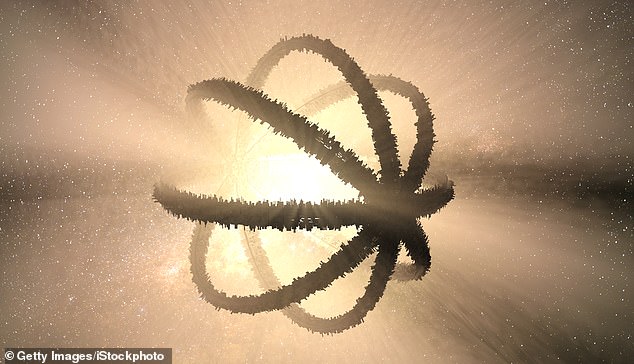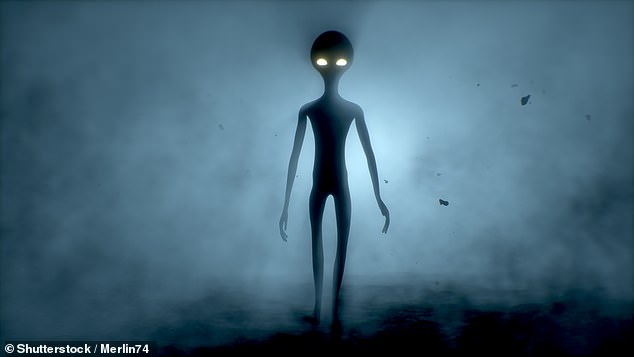From Arrival to Signs, flying saucers have been staple features in science fiction blockbusters throughout the years.
But rather than flying around on UFOs, a new study suggests that advanced civilisations might actually get around the galaxy by driving stars.
According to Dr Clement Vidal, a philosopher from Vrije University Brussels, the fastest-moving stars in the galaxy may be piloted by intelligent aliens.
The vast distances between the stars make travelling immensely time-consuming and risky.
So, rather than leaving the comforts of their home system, some space-faring races might choose to bring their solar system along for the ride, according to the experts.
If aliens found a way of forcing their star to eject material in one direction, they could create a ‘stellar engine’ capable of travelling thousands of miles per second.
While this might sound like a wacky proposal, Dr Vidal says that it could be a reality here in the Milky Way.
Stars with the right characteristics to become stellar engines have been shown to exist in our galaxy, he says.


There are two main reasons why an advanced alien race might have to travel through the galaxy.
In his paper, which is yet to be peer-reviewed, Dr Vidal writes: ‘Two universal evolutionary motivations will make interstellar travel a necessity to any long-lived civilization: survival and reproduction.’
For example, an alien race might leave its home planet to flee a disaster such as an impending supernova or to gather as many resources as possible.
Whatever their reason, Dr Vidals explains that any space-faring aliens will soon bump up against the ‘tyranny of the rocket equation’.
This formula for working out the speed of rockets means that travelling through the universe either requires going fast and light or slow and heavy.
However, since travelling from star to star is likely to take generations no matter how fast you go, it makes much more sense that aliens would choose to go slow.
The best way to do that, Dr Vidal argues, is to build a stellar engine to drive your entire solar system wherever you wanted to go.
This would require an alien race to find some way of controlling which direction radiation or emissions emerged from their star.

This could either be done by creating asymmetric magnetic fields or by intensely heating parts of the star.
Scientists have previously looked at whether extremely fast moving ‘hypervelocity stars’ might be controlled by alien races.
So far, no single hypervelocity star shows any unusual movements which might indicate intelligent control.
However, what makes Dr Vidal’s proposal different is that he suggests looking at binary star systems rather than lone stars.
In particular, the most plausible candidates would be systems called ‘spider pulsars’ in which a small star tightly orbits an incredibly dense neutron star.
Spider pulsars get their name from female black widow spiders which eat their male companions after mating.
However, in this case, the neutron star obliterates its companion as intense winds of energetic particles strip away the outer layers.
‘Redback’ spider pulsars have a companion between a tenth and half the mass of our sun while ‘black widow’ pulsars have a companion with less than five per cent of the sun’s mass.

If aliens placed their machinery close to the neutron star they could theoretically draw on its intense gravity as a ready source of power.
Using this they could evaporate the companion star in carefully timed pulses, creating a thrust that would drive the whole binary system through space.
By varying the timing of these pulses, the alien civilisation could even steer their system with some level of control.
For example, if they always activated the pulse at the same time the system would keep going in the same direction.
But if they activated the machine slightly later, they could change the direction of the pulse and alter their course.
To move in an off-orbit direction the aliens would simply change where their equipment pointed to alter the angle of the pair’s orbit.
Surprisingly, Dr Vidal argues that there are a number of stars that match these very specific criteria.
For example, the ‘black widow’ pulsar PSR J0610-2100 and the ‘redback’ pulsar PSR J2043+1711 both have the right combination of a dense X-ray neutron star and a tightly orbiting companion.

Last year, NASA’s Chandra X-ray Observatory spotted five more spider pulsars in the Omega Centauri globular cluster.
Dr Vidal claims that the theory is plausible enough to merit further investigation.
By keeping an eye out for potential hallmarks of advanced civilisations, researchers can narrow down their search for elusive technosignatures.
Researchers have previously suggested that similar methods could be used to look for stars showing indications of vast superstructures called Dyson Swarms.
Likewise, fast-moving spider binaries might be good candidates for further investigation if there is even a slim chance they are being used as stellar engines.
Dr Vidal added: ‘I see the highlighted spider stellar engine candidates and predictions as promising starting points and clues that require further attention, observation, modeling, and follow-up.’
